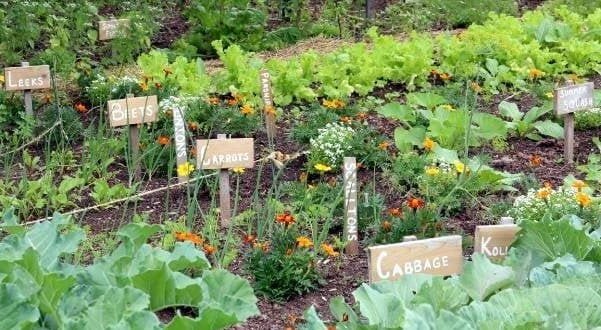As someone deeply passionate about holistic economic models, I find the concept of a self sufficient economy particularly fascinating. The shift towards sustainable living has gained undeniable momentum, underscoring the vital role of resilient communities in the face of global challenges. I’m excited about the potential that lies in harnessing local talents and resources for economic growth. From cities to rural areas across the United States, a movement that prioritizes sustainable practices is on the rise, demonstrating that local production isn’t just nostalgic, but a forward-thinking response to today’s economic and environmental concerns.
Here’s to unpacking how intertwining our lives with local ecosystems can not only lead to individual empowerment but also to a stable and flourishing economy that benefits us all. It’s about time we blur the lines between life, work, and the environment to create a seamless web where society doesn’t just thrive but excels with an inherent resilience against external economic shocks.
Key Takeaways
- Embracing a self sufficient economy can lead to more stable and resilient communities.
- Sustainable living practices are key to long-term economic growth and stability.
- Local production bolsters economic independence and provides a buffer against global market volatility.
- Encouraging sustainable practices contributes to the overall health of the environment and society.
- A shift toward self-sufficiency is not just about survival but about thriving in a harmonious balance with our surroundings.
Understanding Autarky and Economic Self-Sufficiency
In my journey to comprehend the full spectrum of economic autonomy, the lure of autarky and its possibilities for cultivating resilient economies has always captivated my attention. This concept champions using domestic production to achieve nation-wide self-reliance, minimizing the unpredictability introduced by international dependencies.
The Concept of Autarky in Modern Economics
Today, the principles of autarky shape discussions on achieving economic stability without the crutch of global market fluctuations. It represents a strategic framework a country can utilize to support its inhabitants, bolster its own industries, and safeguard its financial future through self-powered initiatives.
Historical Precedents and Lessons for Today’s Economy
Looking back at instances of historical autarky, such as those policies pursued by the Soviet Union, one might discern valuable insights into modern economic crafting. This historical contemplation provides us with lessons on the value and limitations of self-sufficiency, enlightened by past successes and challenges.
Striking a Balance: Self-Sufficiency and Global Trade
Given today’s global intricacies, recognizing the importance of self-sufficiency does not imply a complete disconnection from international commerce. We aim not for full isolation but for a healthy trade balance, leveraging the strengths of both domestic competencies and global partnerships to foster a dynamic and resilient economy.
| Aspect | In Support of Autarky | Benefiting from Global Trade |
|---|---|---|
| Resource Management | Maximizes utilization of local resources | Access to a variety of global resources |
| Market Stability | Less exposure to international market volatility | Diversified market opportunities |
| Technological Advancement | Promotes indigenous innovation | Facilitates exchange of cutting-edge technologies |
| Economic Security | Reduces dependency on external factors | Spreads risk through multiple trade partners |
In my view, as we witness the unfurling of globalization’s fabric, it is increasingly evident that the pursuit of autarky need not be quixotic. Rather, it is a strategic posture, aiming to reinforce a backbone of self-sufficiency while engaging meaningfully on the global stage.
Advantages of a Self Sufficient Economy for Resilient Communities
 In my experience observing the transformative power of self-sufficiency in an economy, I’ve come to understand that the strength of a nation often rests on the bedrock of its local production capabilities and the fostering of resilient communities. This foundation is key to not only surviving but thriving amid global upheaval.
In my experience observing the transformative power of self-sufficiency in an economy, I’ve come to understand that the strength of a nation often rests on the bedrock of its local production capabilities and the fostering of resilient communities. This foundation is key to not only surviving but thriving amid global upheaval.
Reducing Dependence through Local Production and Innovation
It becomes clear that when a community turns towards its own resources, reduced imports instinctively follow. This shift is not simply about producing goods locally, but igniting a spark of innovation and entrepreneurship that touches every aspect of daily life. I’ve watched local industries as they innovate out of necessity, which in turn propels the national market to new heights.
For instance, initiatives like Denmark’s push for sustainable energy have positioned them as global front-runners in renewable solutions. This approach not only underlines the concept of economic self-reliance, but also signifies the potential for each community to contribute uniquely to the global tapestry with their homegrown technologies.
How Self Sufficient Practices Promote Economic Stability
My observations reveal that an economy steeped in self-sufficiency creates a buffer against external economic shocks, thereby promoting economic stability. This self-reliant model ensures that the essentials—food, clothing, and shelter—remain within the reach of the community, even in the face of international trade disruptions or geopolitical tensions that threaten national security.
Moreover, an emphasis on consuming what is produced locally resonates with the ethos of cultural identity preservation. It’s a celebration of heritage and tradition, woven through products and services that inherently carry the unique narrative of their origins. This, in effect, preserves the cultural mosaic that might otherwise be diluted by global homogenization.
Ultimately, the journey towards self-sufficiency is about more than survival; it’s about crafting a vision of an economy that is both sustainable and secure, one that faithfully reflects the community it serves.
Maximizing Resources for a Self-Reliant Society
 As we delve deeper into the pursuit of economic independence, the spotlight shines on the abundance of internal assets that form the backbone of a society striving for self-reliance. My own journey into this territory underscores the necessity of rigorous resource assessment, a process that scrutinizes both the tangible and intangible assets at our disposal. This comprehensive examination is akin to a diagnostic for our collective economic health, flagging areas primed for cultivation and those necessitating innovation.
As we delve deeper into the pursuit of economic independence, the spotlight shines on the abundance of internal assets that form the backbone of a society striving for self-reliance. My own journey into this territory underscores the necessity of rigorous resource assessment, a process that scrutinizes both the tangible and intangible assets at our disposal. This comprehensive examination is akin to a diagnostic for our collective economic health, flagging areas primed for cultivation and those necessitating innovation.
The crux of this assessment rests on the deep understanding of our tangible reserves, such as infrastructure and natural resources, and intangible wealth, which includes intellectual prowess and human capital. This duality encompasses all facets of community enrichment, from the physicality of land and edifices to the creativity and expertise residing within each individual member.
Turning to local entrepreneurship, it’s an indispensable catalyst in the chemical reaction of resource optimization. Supporting homegrown businesses forges a sturdy framework for the culture of innovation and drives the wheel of internal economy.
Here’s an illustration of how a resource audit can align with strategic development:
| Resource Type | Current Status | Strategic Initiatives |
|---|---|---|
| Land Use | Underutilized spaces | Community gardens, local markets |
| Technology | Outdated systems | Upgrading infrastructure, tech incubators |
| Professional Skills | Variable expertise levels | Skill development programs, apprenticeships |
The tangible assets, often most visible, are just the tip of the iceberg. Below the surface, our intangible resources—peerless in value—give us the true edge. It is the knowledge, the creativity, the collective intelligence, and the shared values that define our real might and potential for self-sustenance.
In my embrace of minimalism and autonomy, I recognize the power vested in the ability to assess and utilize available resources for the creation of a resilient, self-reliant society. It is this conviction that propels us towards a future illuminated by self-sufficiency, where the reliance on external aid diminishes with each stride we take in fortifying our local economies.
Local Production: The Keystone of Resource Independence
Embarking on the path to a self-sufficient economy, I’ve witnessed firsthand the vital role that local production plays. Far beyond a simple buzzword, local production has emerged as the lifeblood of resource independence, driving forward a movement where resilient economies are blossoming. In my experience, it’s the fostering of hometown innovation and the empowerment of local entrepreneurs that make the pursuit of domestic growth not just a dream, but an actionable reality. Embracing localized production is more than an economic choice—it’s a commitment to a lifestyle that prioritizes sustainability and community well-being over global dependency.
Fostering Domestic Production for Economic Growth
Incentivizing domestic production has yield gratifying strides towards self-reliance. Through a blend of strategy and support, local industries have started to flourish, invigorating the national economy with newfound vitality. By channeling investments into regional businesses, the benefits of economic growth are felt at a communal level. Infrastructure improvements, job creation, and a surge in market diversity are but a few testimonies of the progress I’ve observed. Ensuring that each community has the opportunity to contribute to this growth is crucial for the continuance of this upward trajectory.
Mobilizing Local Entrepreneurs and Innovators
My involvement with local entrepreneurs has revealed the boundless potential they possess. Their innovation is a cornerstone of resource independence, transforming ideas into tangible products and services that meet the nuanced needs of their communities. Initiatives that stimulate these enterprising minds are instrumental in spearheading a self-sufficient economy. Bursting with ingenuity, these local entrepreneurs have redefined what it means to be self-reliant, shaping economies that are not only robust but also adaptive. By nurturing this inventive spirit and providing platforms for growth, we’re collectively paving the way forward for a more sustainable, localized future.
FAQ
What is a self sufficient economy and how does it support economic growth?
A self sufficient economy is one that relies on its internal resources and capacities to meet the needs of its population, promoting sustainable living and local production. It supports economic growth by building resilient communities that are less vulnerable to global economic fluctuations and fostering sustainable practices that contribute to long-term stability and prosperity.
What does autarky mean in the context of modern economics?
Autarky refers to a principle of economic self-sufficiency where a region or nation strives to operate independently without relying on international trade. In modern economics, while complete autarky is rare, the concept influences policies that aim to strengthen domestic production and reduce dependencies on external economies.
Can you provide some historical examples of autarky and what lessons can be learned from them?
Historical examples of autarky include the Soviet Union’s policies to minimize reliance on capitalist nations. Lessons from these examples highlight the importance of being self-reliant while also recognizing the benefits of engaging in strategic global trade. These precedents can inform current economic strategies for achieving a balanced and resilient economy.
How does striking a balance between self-sufficiency and global trade benefit a country?
Striking a balance allows a country to enjoy the best of both worlds—maintaining economic stability and resilience through self-sufficiency while still accessing technological advancements, diverse markets, and resources through global trade. This approach can fortify the economy against external shocks and contribute to sustainable growth.
What are the key advantages of a self sufficient economy for community resilience?
A self sufficient economy reduces dependence on imports, enhancing national security and resilience during crises like pandemics. It spurs local innovation and entrepreneurship, leading to solutions tailored to community needs. Moreover, it contributes to the preservation of cultural identity and supports economic stability through empowering local industries.
In what ways do self sufficient practices promote economic stability?
Self sufficient practices encourage the creation and consumption of local goods and services, which stabilizes the economy by reducing the impact of international market fluctuations. It also promotes a sustainable and balanced economy focused on long-term growth rather than short-term gains.
How do we maximize resources for a self-reliant society?
Maximizing resources involves a comprehensive assessment of both tangible and intangible assets, such as land, infrastructure, intellectual property, and human capital. By enhancing these assets, communities can build economic independence, foster local entrepreneurship, and move towards a self-reliant society.
Why is local production considered the keystone of resource independence?
Local production leverages area-specific resources to create jobs, strengthen the local economy, and reduce reliance on imports. This foundational aspect of a self-sufficient economy empowers communities to be resource independent, fostering economic growth and self-reliance.
How can we mobilize local entrepreneurs and innovators to benefit the economy?
Mobilizing local entrepreneurs and innovators involves providing support through education, funding, and networks that encourage the development of locally-relevant products and services. This cultivates a vibrant entrepreneurial ecosystem that can drive economic growth and innovation within the community.













